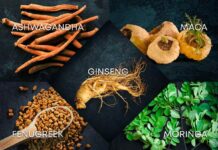The process of treating and handling food to prevent or delay food decomposition, loss of quality, edibility, or nutritional content and enable prolonged food storage.
Preserving entails delaying the oxidation of lipids that might get rancid as well as inhibiting the growth of bacteria, fungi (like yeasts), and other microbes.
Preservation of Food Is Important
Although some methods work by introducing benign bacteria or fungi into the food, food preservation stops the growth of microorganisms (such as yeasts) or other microorganisms and slows the oxidation of fats that cause rancidity.
Food preservation increases the diversity of the food. For instance, canned or dehydrated peas might be used in place of fresh peas during the hot summer months.
Food preservation increases the shelf life of food. Cherries, pineapples, and other fruits and vegetables may all be preserved in a variety of methods for a very long time.
Food supply is increased by food preservation.
Food waste is reduced via food preservation. Food waste is decreased when surplus foods that would have otherwise gone to waste are prepared and stored.
Reducing nutritional deficits is made easier by food preservation. Foods that have been preserved assist to diversify the diet. For instance, no vegetables are cultivated in certain Middle Eastern countries due to the dry nature of the land. Importing fresh and preserved fruits and vegetables make up for this gap.
Techniques for Preserving

There are several methods for preserving food that can be used to stop, postpone, or otherwise greatly minimize food deterioration. Food may be cultivated, stored, marketed, and preserved in the customer’s house for a suitable amount of time with the help of preservers, extending its shelf life.
Although some methods have significantly changed the nature of preserved foods, maintaining or producing nutritional value, texture, and flavor is a crucial aspect of food storage techniques. Today, many of these modifications are viewed as desirable characteristics, such as cheese, yogurt, and pickled onions.
Drying

One of the oldest methods of food preservation is drying, which lowers water activity to the point where bacterial development is prevented.
Refrigeration

By reducing the development and reproduction of microorganisms and the activity of the enzymes that make food rot, refrigeration protects food.
Freezing

It is also one of the most popular methods for preserving a variety of foods, including prepared items that wouldn’t require freezing in their raw form.
Salting

Through an osmosis process, the meat loses moisture during the salting or curing process. Meat is either salted, sugar-cured, or both on occasion. In addition to giving the meat its unique pink hue, nitrates, and nitrites help prevent the growth of Clostridium botulinum.
Crystallization
Fruits are preserved using sugar, either in fruit syrup (apples, peaches, and apricots) or in a crystallized form, where the fruit is boiled in sugar until it crystallizes and is then stored in a dry environment.

Angelica, ginger, and citrus (candied peel) peels can all be processed using this technique. This procedure is modified to produce glacé fruit, such as glacé cherries, where the fruit is first preserved in sugar before being removed from the syrup and sold, maintaining both the sugar content of the fruit and the thin syrup covering.
Alcohol and sugar are frequently used in brandy or other alcoholic beverages to preserve high-end goods like fruit. These shouldn’t be confused with liquors that have fruit aromas added, like cherry brandy.
Smoking
Perishable food is smoked to extend its shelf life. The exposure of food made from burning plant components, such as wood, to smoke has this effect. This method of food preservation is most frequently used on fish and meat that has been cured.
Also read: Top 10 Refreshing Shower-tips for this summer
Fruits and vegetables like paprika, cheeses, spices, and drink components like malt and tea leaves are also smoked, although mostly for cooking or flavor. One of the first techniques for food preservation, it presumably developed after the development of cooking over fire.
Pickling

A food preservation technique called pickling uses a palatable antibacterial liquid. Chemical pickling and pickling by fermentation are the two basic categories into which pickling may be split.
Canning

Cooking the food, putting it in sterile canisters or pots, and then sterilizing the containers by boiling them to kill or weaken any microorganisms is called canning. Foods may need the last step in a pressure cooker since they have varied degrees of natural spoiling prevention.
Pasteurization

It is described as the fast cooling to 7°C after heat treatment of food material at 72°C for 15 seconds, 63°C for 30 minutes, or 90°C for 0.5 seconds. Because they cause less harm to the nutrient composition and sensory qualities of meals, high-temperature-short-time (HTST) treatments are preferred over low-temperature-long-time (LTLT) treatments.

























